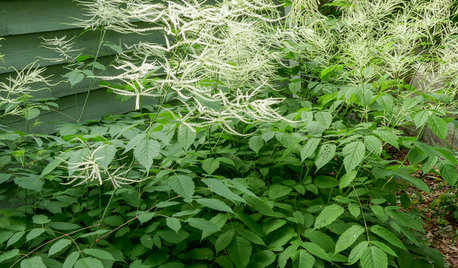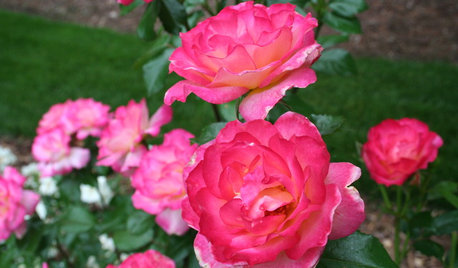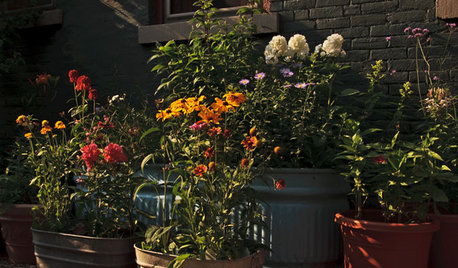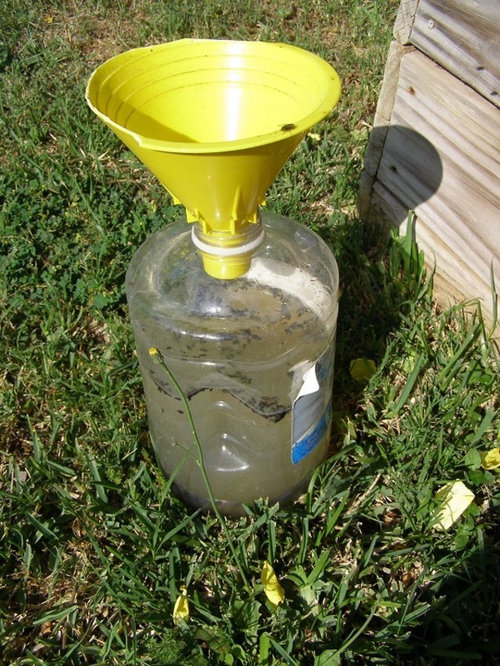Japanese Beetle Trap
tomt226
10 years ago
Related Stories

GARDENING GUIDESOrganic Matters: Thwart Insect Pests With Trap Crops
Add a few sacrificial plants to your garden to lure insects away from the harvest
Full Story
FLOWERS AND PLANTSAruncus Dioicus Is a Stately Plant for Shady, Moist Garden Spots
Plant goat’s beard in perennial and woodland gardens. Its large white spring blooms attract bees, beetles and butterflies
Full Story
GARDENING GUIDESSoutheast Gardener: What to Do in June
Get your snippers out to protect your roses from beetles and harvest lavender from the landscape. It's a glorious month for Southern gardens
Full Story
GARDENING GUIDESGreat Lakes Gardener: What to Do In July
Gather juicy berries and breathe in the lovely scent of lilies, but don't forget to stay on top of watering needs and shake off the beetles
Full Story
GARDENING GUIDESGarden Myths to Debunk as You Dig This Fall and Rest Over Winter
Termites hate wood mulch, don’t amend soil for trees, avoid gravel in planters — and more nuggets of garden wisdom
Full Story
FRUIT TREESHow to Grow Your Own Juicy Plums
Easier than other stone fruits and with a variety of colors to choose from, plums are a versatile garden addition
Full Story
GARDENING AND LANDSCAPINGBe a Citizen Scientist to Help Wildlife, Learn and Have Fun Too
Track butterflies, study birds, capture stars ... when you aid monitoring efforts, you’re lending Mother Nature a hand
Full Story
GARDENING GUIDESLessons in the Rewards of Selfless Gardening
Let go of gardening for your own vision and watch the garden’s own true vision come forth
Full Story
HOME TECHMeet the New Super Toilets
With features you never knew you needed, these toilets may make it hard to go back to standard commodes
Full Story
HOLIDAYS50 Ways to Wrap Holiday Gifts in Style
Here are all the tools and trimmings you need for your best-wrapped gifts ever
Full Story






HotHabaneroLady
tomt226Original Author
Related Professionals
Barrington Hills Landscape Architects & Landscape Designers · Belmont Landscape Architects & Landscape Designers · Carson Landscape Architects & Landscape Designers · Glassmanor Landscape Architects & Landscape Designers · Roosevelt Landscape Architects & Landscape Designers · Arlington Landscape Contractors · Clark Landscape Contractors · Hendersonville Landscape Contractors · Medford Landscape Contractors · Mission Landscape Contractors · Southbury Landscape Contractors · Spring Landscape Contractors · Tamarac Landscape Contractors · Tehachapi Landscape Contractors · Waltham Landscape ContractorsHotHabaneroLady
esox07 (4b) Wisconsin
tomt226Original Author
seysonn
KarenPA_6b
tomt226Original Author
rhizo_1 (North AL) zone 7
rdback
tomt226Original Author
tomt226Original Author
seysonn
Carlos
tomt226Original Author
Enocelot
mary_rockland
tommyr_gw Zone 6
mary_rockland